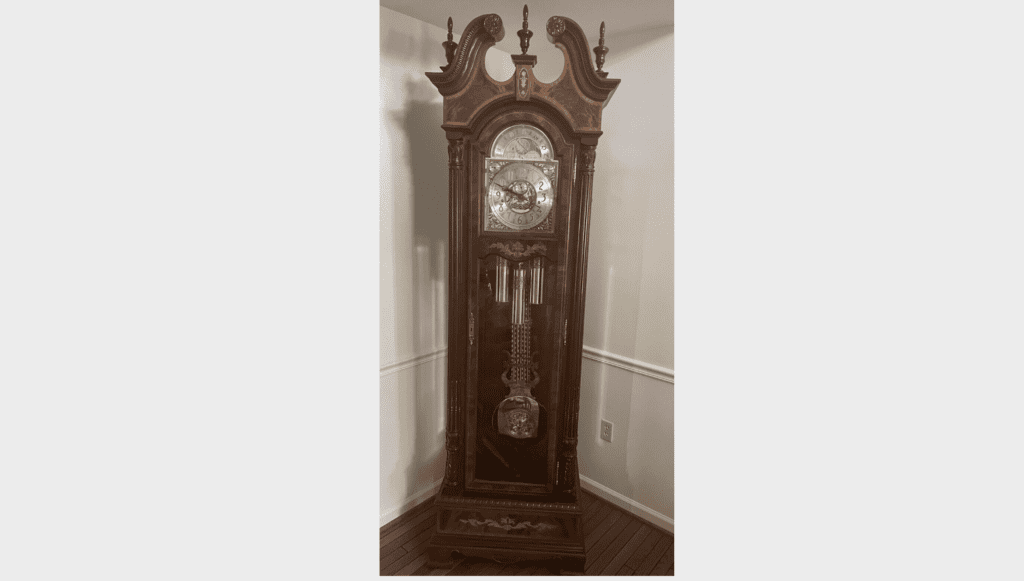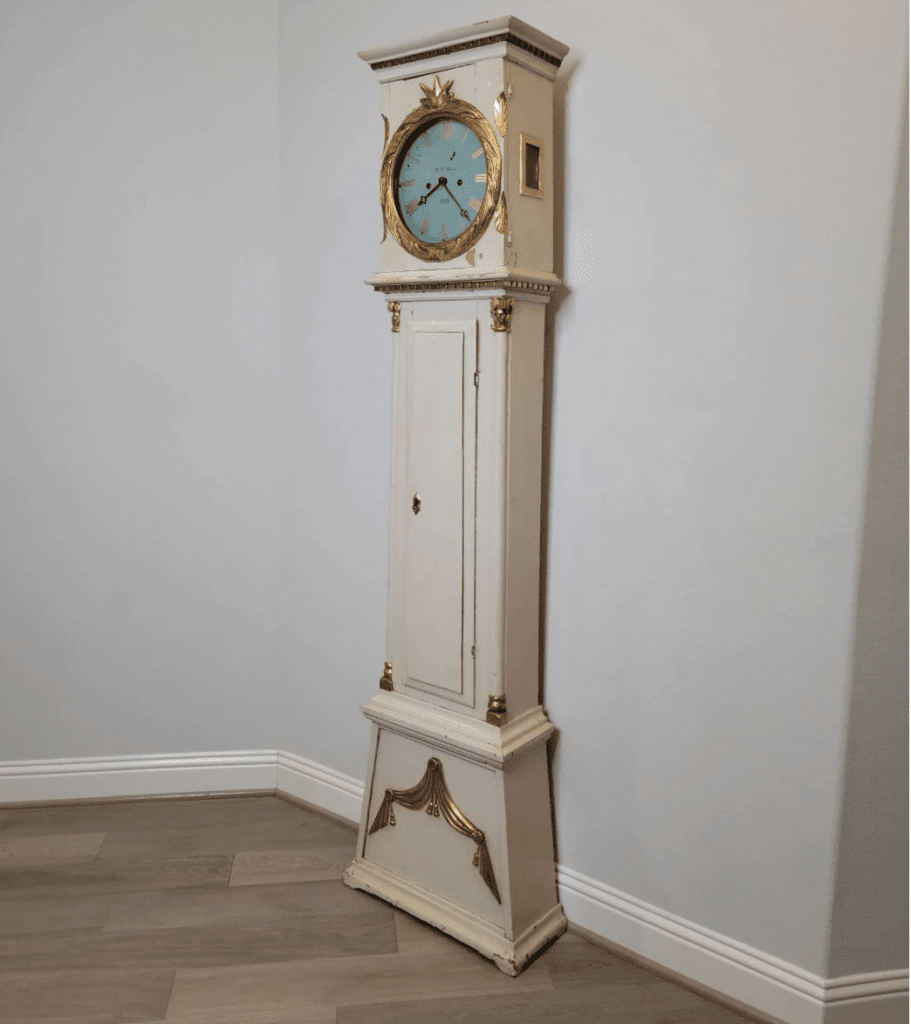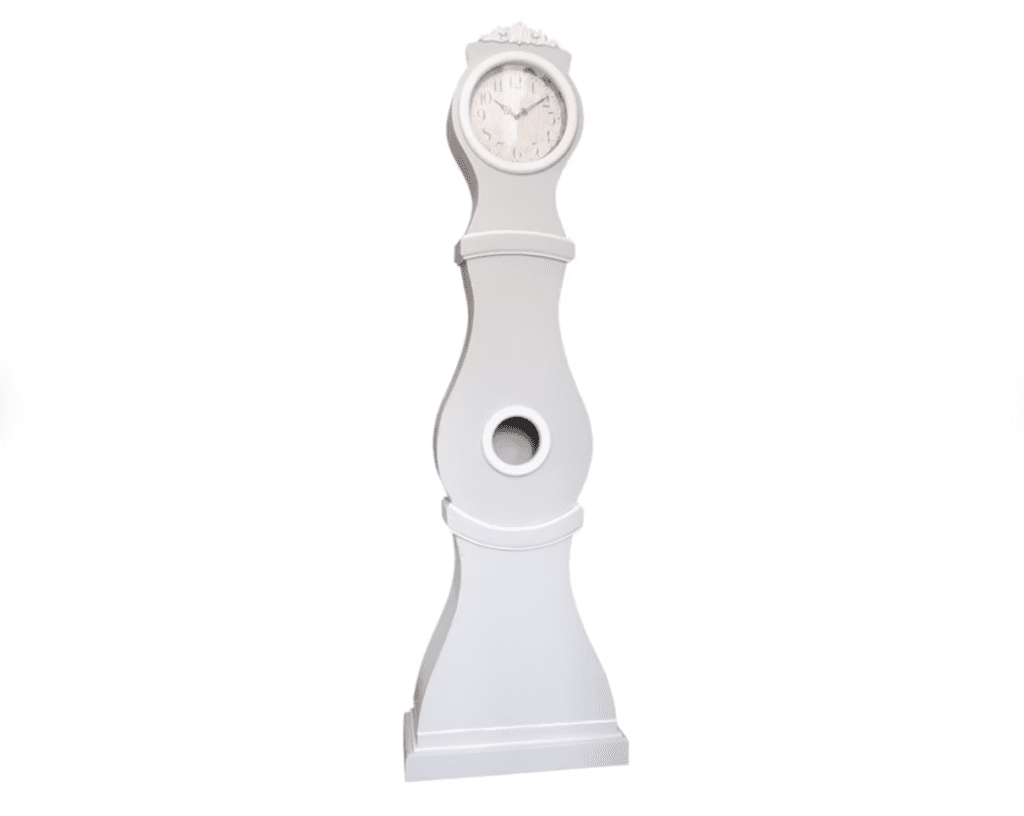Since the invention of clocks, they’ve had one primary purpose: to help people measure time. It is undeniably one of the most important inventions in human history. Up until the early 20th century, the most accurate piece of technology for time-keeping was the pendulum clock. This was invented in 1656 by Christiaan Huygens who was a mathematician, physicist, and inventor of Dutch origin.
Shortly after the pendulum clock was invented, the Grandfather Clock originated in 1680. British clockmaker William Clement adopted the two-second pendulum system and built the first Grandfather Clock, which was called a longcase clock or tall clock at the time.
The Grandfather Clock remains one of the most prominent and respected pendulum clocks. They have a long, illustrious history, so let’s take a deeper look at how Grandfather Clocks have evolved with time.

How did the Grandfather clock get its name?
It is widely believed that the longcase clock became popularized as the Grandfather clock after American songwriter Henry Clay Work wrote a song about the tall pendulum clock. The notable songwriter had visited England and stayed in the George Hotel in North Yorkshire, where a tall, dead clock sat in the lobby.
When Work asked about it, the story he was told was likely untrue: the clock became less accurate after the death of its first owner, and then finally stopped at the death of the second. More realistically, the clock was probably too expensive for the hotel to fix, so they just left it dead in the lobby.
Work wrote and released a song titled “My Grandfather’s Clock” that became rather popular back in 1876. It sounded a lot more appealing than “My Longcase clock”, so the public acceptance of the new name quickly grew and stuck.
To read more about the Grandfather Clock song and how Grandfather clocks got their name, click here.
Different types of Grandfather clocks
The eventual design of the original Grandfather clock quickly evolved as it started to gain popularity across many parts of the world. This gave rise to different types of similar longcase clocks, most of which were designed and made outside Britain.
Comtoise Clocks
Comtoise clocks are also known as “Morbier clocks” or “Morez clocks”. They originated in France circa 1680, right after William Clement’s design took root in Britain, and eventually, these Morbier clocks became very common.
The Comtoise clock has a rather distinct feature, with a curved potbelly-like case and an elongated pendulum bob that is fashionably decorated.

Bornholm clocks
Bornholm clocks are Grandfather clock-styled timepieces that had their origins in Denmark, about fifty years after William Clement’s highly popular design had taken root in Britain. They are named after the location in which they were made: Bornholm, a Danish island off Sweden’s south coast.
Bornholm clocks have a distinctly square shape, in comparison to other Grandfather clocks. It also features small windows that showcase the inner workings of the clock.

Empire clocks
Empire clocks are a distinct type of Bornholm clock that entered into production in the 19th century before fizzling out of popularity during the 20th century. It had a white face with black-colored numbers and just one window, rather than the two that usual Bornholm clocks had.
Mora clocks
Mora clocks are Swedish makes that originated in the same century as their Danish counterparts. Just like the Bornholm clocks, Mora clocks are named after the town in which they were built: Mora Town, in the Dalarna province of Sweden.
They notably have slimmer bodies, just 28 inches wide, but stand quite tall, at 99 inches (just over 8 feet).

The difference between a Grandfather clock and a Grandmother clock
Both Grandfather clocks and Grandmother clocks are longcase, but the key difference is in the height. Grandfather clocks often stand tall, averaging six to eight feet and are capable of easily reaching low ceilings. Grandmother clocks, however, often measure between five and six feet.
The Grandmother clock gets its name from the popularity of the Grandfather clock, and there are even smaller clocks called Granddaughter clocks. These clocks average a rather short height of three to five feet, which can be a rather vast difference from the lengthy Grandfather clocks.
For more on Grandmother Clocks, click here.
How do Grandfather clocks last so long?
The life expectancy of a Grandfather clock is just 20 years, but that’s if you don’t maintain it or keep it clean. Taking proper care of such a clock means oiling it once every five years, as this can elongate the life expectancy of the clock.
Oiling the movement on the clock reduces the friction that could see it stall over time. However, this requires a good level of expertise as the hands and dial will have to be removed to reach the movement, and then reattached.
A properly maintained grandfather clock can last for well over a lifetime, and in some cases, two lifetimes.
How valuable is a Grandfather clock?
More often than not, these clocks are passed down across generations, which tends to mean that they are usually quite old. However, the value of your grandfather clock, if you own one, will mostly be dependent on the features and functionality of the clock.
Overall, a grandfather clock could be valued anywhere from $200 to around $20,000. If the clock was well-maintained and still works, there’s a good chance it would be valued in the higher range, especially if it is quite old. If it hasn’t been able to tell the time in years, chances are it could be valued in the lower range, irrespective of age.
Antique grandfather clocks are some of the most expensive, and the older it is, the higher they will be valued. To find the age of the clock, there’s usually a sticker or marking on the clock that shows either the manufacture date or the manufacturer. This could give you a good idea about how old the clock is.
The manufacturer is also a potential decider on the value of your clock. Some particular names have been seen as legendary in the clock business for centuries, and if you own a clock by any of them, chances are it will increase in value.
Manufacturers like Franz Hermle, Howard Miller, and Ridgeway were notable for being the best clock manufacturers in the earlier centuries.
Most expensive Grandfather clocks in history
While most of these timeless pieces of beauty will hardly cross the $20,000 mark, some truly rare clocks have easily surpassed that range. These rare clocks don’t just tell the time. They tell a story, sharing the history and art of a time long past.
The Chippendale is a rare, exquisite Grandfather clock that was made circa 1770. It was estimated to be valued between $150,000 and $200,000 but was eventually auctioned at a stunning $800,000.
However, the most expensive Grandfather timepiece is the fascinating Duc d’Orleans Breguet Sympathique Clock, which sold for a startling $6.8 million. Designed in 1835 by Abraham-Louis Breguet, the clock featured a unique pocket watch that was mounted at the very top.
Conclusion
Grandfather clocks may have started with William Clement’s mathematical ingenuity that helped him design the very first. However, these timeless aesthetic pieces became a worldwide phenomenon, popularized further by a song based on a half-true story.
Small towns in Europe like Mora became notable for their uniquely designed clocks and with the turn of the 20th century, these beautiful Grandfather clocks lost their popularity. However, they haven’t lost their beauty and authenticity. With a properly maintained clock built to last over 200 years, there’s still an opportunity for a potential resurgence of these beauties.

